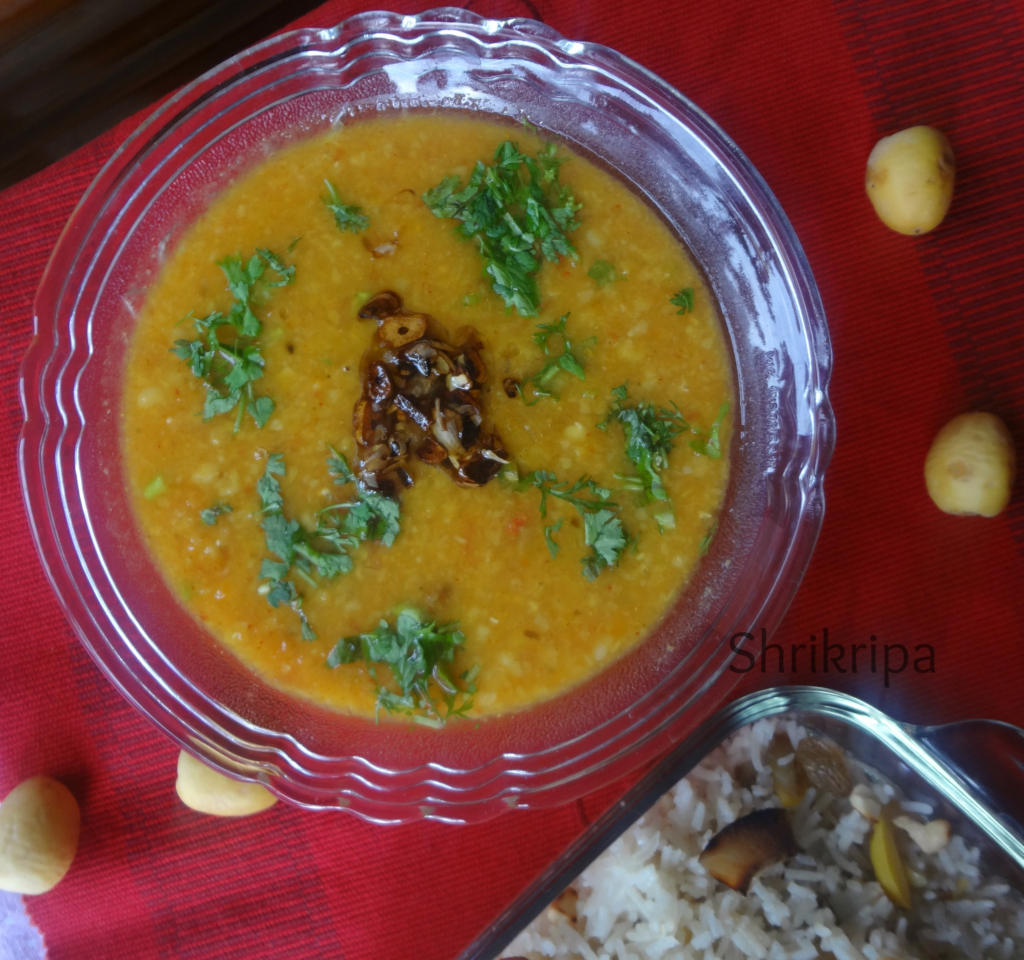This pickle happened due to my daughters. It is a perfect accompaniment for any parathas or Thepla. I came to know about this recipe from my friend Kavita, who had gifted me this pickle, prepared by her. When it was about to finish my daughters insisted that I prepare it at home and this is the result of their insistence. I want to thank Kavita, who did answer all my queries patiently and guided me through the process.
According to my friend, Thothapuri variety of mango tastes good for this masala. Hence I tried with the same.

Ingredients:
Mango – 1 kg (used Thothapuri variety)
Salt
Turmeric – 1 table spoon
Mustard oil – 1 cup
For Masala:
Red chilli powder – 2 table spoons
Hing – 1 table spoon
Fennel seeds -2 table spoons
Kalonji – 2 table spoons
Yellow mustard seeds – 3 table spoons
Fenugreek/Methi seeds- 1 ½ table spoons
Method:
-Wash, dry and cut the mango into pieces.
-Marinate these pieces with 2 fistful of salt, 1 table spoon of Haldi/ turmeric and mix thoroughly by using dry hand.

-Keep this for two hours and drain the oozed-out water and reserve it for future use.
-Spread these marinated mango pieces over dry cloth and dry under partial sun light or air dry.

-In the evening , remove those shrunken mango pieces and once again mix it with oozed out salted water which we have reserved from previous Marination process.
– The next (second) morning, drain and repeat the process of drying.
-On the second evening, those mango pieces will be ready to mix masala.
-First heat half a cup of mustard oil until it is very hot, then cool it.

-Take all the ingredients from fennel seeds to methi seeds and lightly pound in a small mixer jar by using pulse option. Don’t make fine powder.
-Now take one bowl, mix in all the masalas, sun dried mango, additional salt and mix nicely by using your clean and dry hand.
-Fill the mixture in a glass bottle and pour cooled mustard oil and cover the bottle with muslin cloth and keep it under sunlight for 1 week or partial sunlight.

-After one week, pickle would reduce in quantity. Pour remaining half of mustard oil by heating at first, then cooling it.
-Cover the cloth and repeat the process of keeping it in sunlight for some more days.
-Now it is ready to consume.































